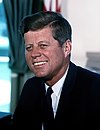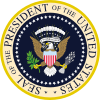Abraham, Martin and John
| "Abraham, Martin and John" | ||||
|---|---|---|---|---|
 | ||||
| Single by Dion | ||||
| from the album Dion | ||||
| B-side | "Daddy Rollin' (In Your Arms)" | |||
| Released | August 1968 | |||
| Recorded | Allegro Sound Studios; Engineer Bruce Staple | |||
| Genre | Folk rock | |||
| Length | 3:15 | |||
| Label | Laurie | |||
| Songwriter(s) | Dick Holler | |||
| Producer(s) | Phil Gernhard | |||
| Dion singles chronology | ||||
| ||||
"Abraham, Martin and John" is a 1968 song written by Dick Holler. It was first recorded by Dion, in a version that was a substantial North American chart hit in 1968/69. Near-simultaneous cover versions by Smokey Robinson and the Miracles and Moms Mabley also charted in the U.S. in 1969, and a 1969 version by Marvin Gaye was the hit version in the U.K. It was also a hit as part of a medley (with "What The World Needs Now") for Tom Clay in 1971, and has subsequently been recorded by many other artists.
The song itself is a tribute to the memory of four assassinated Americans, all icons of social change: Abraham Lincoln, Martin Luther King Jr., John F. Kennedy, and Robert F. Kennedy. It was written in response to the assassination of King and that of Robert Kennedy in April and June 1968, respectively.[1]
Lyrics[]
Each of the first three verses features one of the men named in the song's title, for example:
- Anybody here, seen my old friend Abraham?
- Can you tell me where he's gone?
- He freed a lot of people, but it seems the good, they die young
- You know I just looked around and he's gone
After a bridge, the fourth and final verse mentions "Bobby" (referencing Robert F. Kennedy), and ends with a description of him walking over a hill with the other three men.
Dion recording[]
The original version, recorded by Dion, featured a gentle folk rock production from Phil Gernhard and arrangement from John Abbott. The song features a flugelhorn, an electric organ, bass, and drums.
Although it was quite unlike the rock sound that Dion had become famous for in the early 1960s, and even more unlike Holler and Gernhard's previous collaboration in the 1966 novelty smash "Snoopy Vs. The Red Baron", "Abraham, Martin and John" nonetheless was a major American hit single in late 1968. It reached #4 on the Hot 100 and #1 on Chicago station WLS[2] and was awarded an RIAA gold record for selling a million copies. In Canada, it topped the charts, reaching #1 in the RPM 100 on November 25, 1968.[3] In 2001 this recording would be ranked number 248 on the RIAA's Songs of the Century list. The record was also popular with adult listeners, reaching #8 on Billboard's Easy Listening survey. The personnel on the original recording included Vinnie Bell and Ralph Casale on guitar, Nick DeCaro on organ, David Robinson on drums, Gloria Agostini on harp, and George Marge on oboe and English horn.
Chart performance[]
Weekly charts[]
|
Year-end charts[]
|
Later recordings and performances[]
- Smokey Robinson & the Miracles recorded a version that became an American Top 40 single in 1969, reaching #33[9] while reaching #16 on the US R&B charts[10]
- Marvin Gaye, with an orchestral arrangement by Norman Whitfield, also recorded a version in 1969 that became a top-ten hit (#9) in the United Kingdom in 1970 (Gaye's version was never released in the U.S. as a single but was featured on his 1970 album, That's the Way Love Is, and was one of his first experiments with social messages in his music which would culminate in his 1971 album, What's Going On.)
- Moms Mabley, best known as a comedian, performed a completely serious version that hit the U.S. Top 40, reaching #35 in 1969[11] and #18 on the R&B charts[12]
- Ray Charles recorded his version of the song on his 1972 album A Message from the People.
- Marillion released two versions in 1999. A live recording was on their Unplugged at the Walls album, and a studio version on their fanclub Christmas CD the same year.
- Whitney Houston performed the song in her live concert in 1997.
- Wilson Pickett recorded a variation of the song, "Cole, Cooke & Redding", as the B-side of his version of The Archies' hit "Sugar, Sugar".
- Harry Belafonte recorded the song in his 1970 album Belafonte By Request released by RCA Records
- in the Dylan concert movie "Trouble No More" released by Sony in 2017
- Leonard Nimoy included this song in his 1970 LP, "The New World Of Leonard Nimoy" (Dot Records, DLP 25966)
As part of medleys[]
The song is also featured on Tom Clay's 1971 "What the World Needs Now Is Love/Abraham, Martin, and John", a medley combining Dion's recording with Jackie DeShannon's recording of Burt Bacharach's "What the World Needs Now Is Love", along with vocals by The Blackberries. Clay's recording features narration (an adult asking a child to define several words associated with social unrest), sound bites from speeches given by President John F. Kennedy, Robert F. Kennedy, and Martin Luther King Jr., along with sound bites from the live press coverage of Robert Kennedy's assassination, and his eulogy by his brother Edward M. Kennedy. It reached No. 8 on the Billboard Hot 100 chart[13] on August 14, 1971 and #32 on the R&B charts.[14] It reached #3 in Australia.[15]
In 1997, Whitney Houston sang a rendition of "Abraham, Martin and John" that aired on VH1 and HBO: Whitney Houston: Live Washington DC.
See also[]
- Civil rights movement in popular culture
- Cultural depictions of Abraham Lincoln
- Cultural depictions of John F. Kennedy
References[]
- ^ "How Robert Kennedy Inspired 'Abraham, Martin and John'". The New York Times Company. June 5, 2018. Retrieved June 10, 2018.
- ^ "89 Hit Parade". WLS. December 2, 1968. Retrieved November 26, 2020.
- ^ Jump up to: a b "Item Display - RPM - Library and Archives Canada". Collectionscanada.gc.ca. Retrieved July 14, 2015.
- ^ "Flavour of New Zealand, 17 January 1969 - search listener". Flavourofnz.co.nz. Retrieved March 17, 2017.
- ^ Joel Whitburn's Top Pop Singles 1955-2002
- ^ "Cash Box Top 100 12/21/68". Tropicalglen.com. December 21, 1968. Archived from the original on October 4, 2016. Retrieved October 1, 2016.
- ^ "Item Display - RPM - Library and Archives Canada". Collectionscanada.gc.ca. Retrieved October 1, 2016.
- ^ Whitburn, Joel (1999). Pop Annual. Menomonee Falls, Wisconsin: Record Research Inc. ISBN 0-89820-142-X.
- ^ Whitburn, Joel The Billboard Book of Top 40 Hits, Billboard Books, New York, 1992, p. 317
- ^ Whitburn, Joel, The Billboard Book of TOP 40 R&B and Hip Hop Hits, Billboard Books, New York 2006, p. 400
- ^ Whitburn, Joel, The Billboard Book of Top 40 Hits, Billboard Books, New York, 1992 p. 287
- ^ Whitburn, Joel, The Billboard Book of Top 40 R&B and Hip Hop Hits, Billboard Books, New York, 2006, p. 363
- ^ Whitburn, Joel The Billboard Book of Top 40 Hits, Billboard Books, New York, 1992, p. 102
- ^ Whitburn, Joel, The Billboard Book of TOP 40 R&B and Hip Hop Hits, Billboard Books, New York 2006, p.109
- ^ Kent, David (1993). Australian Chart Book 1970–1992 (illustrated ed.). St Ives, N.S.W.: Australian Chart Book. p. 66. ISBN 0-646-11917-6.
Further reading[]
- Collins, Ace. Songs Sung, Red, White, and Blue: The Stories Behind America's Best-Loved Patriotic Songs. HarperResource, 2003. ISBN 0060513047
External links[]
- 1968 singles
- 1969 singles
- 1971 singles
- Songs about the assassination of John F. Kennedy
- Works about the Robert F. Kennedy assassination
- Songs written by Dick Holler
- Dion DiMucci songs
- Marvin Gaye songs
- The Miracles songs
- Andy Williams songs
- Motown singles
- Laurie Records singles
- Songs inspired by deaths
- Songs in memory of deceased persons
- Songs in memory of Martin Luther King Jr.
- 1968 songs
- American patriotic songs
- American folk rock songs
- Songs about John F. Kennedy
- RPM Top Singles number-one singles


